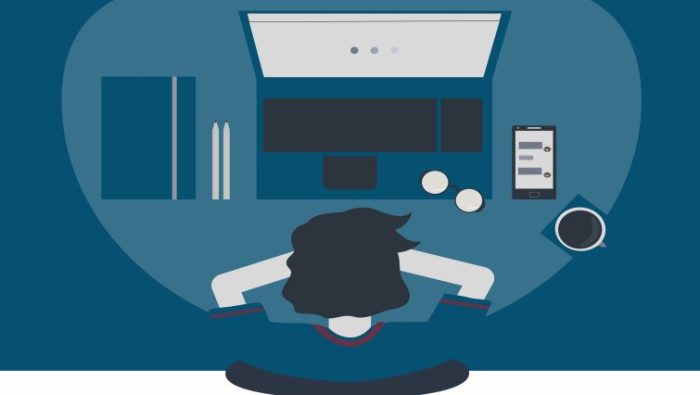Remote Work Burnout Is On The Rise
 Publié le 15 April 2021
Publié le 15 April 2021
New research shows remote work burnout is on the rise as many professionals navigate their second year of working from home. People have been trying to balance personal lives and professional responsibilities for months and months, and it is clear that even those with the ability to work remotely are not immune from the serious consequences of employee burnout.
Remote Work Burnout Is A Real Problem
In a new survey from Capterra, 1,000 small business employees were asked about the impact of remote work burnout, and the results are not encouraging. 70% of Canadian workers report being burned out by remote work, as do 77% of US workers. Both rank in the top six of countries where remote work burnout is on the rise. When a large majority of workers report experiencing this condition, it’s clear that the reality of remote work burnout needs to be understood and addressed.
What Is Employee Burnout?
First, a quick definition. It’s important to note that feeling tired as a result of work and chronic employee burnout are two very different things. The Mayo Clinic defines employee burnout as “a special type of work-related stress — a state of physical or emotional exhaustion that also involves a sense of reduced accomplishment and loss of personal identity.”
“Job burnout is a special type of work-related stress — a state of physical or emotional exhaustion that also involves a sense of reduced accomplishment and loss of personal identity.”
-The Mayo Clinic
Employee burnout and the resulting emotional exhaustion have been linked to depression, anxiety, and related mood disorders that can have a serious negative impact on mental health and well-being. Burnout can even have consequences for your physical health, with a negative impact on the body’s cardiovascular system and increasing the likelihood of heart attacks, strokes and blood clots. Employee burnout is a serious thing, which is why employees and employers have finally begun to take efforts to recognize its signs and causes, and work to prevent it in the first place.
Of course, all these efforts and plans were put into place before the deadly COVID-19 pandemic upended most of society, and radically changed the way that millions of people work and do their jobs.
The New Normal, Isn’t
People have an incredible ability to adapt to times of crisis. While this adaptability is praised and valued by business leaders, it also takes a large edible amount of mental and emotional effort and only grows more difficult the longer a situation persists. The ongoing pandemic has made for a daily barrage of new updates, information and guidelines for more than a year. While it is very important to adapt to new information to ensure the health of those around us and the most vulnerable members of our community, it would be disingenuous to deny the mental strain it has caused. While it may seem like transitioning to working from home is just a simple adaptation, the truth is that it actually involves constant re-adaptation to new daily realities and work procedures.
Remember when millions of people first started using Zoom and other video conferencing apps? At first it seemed like a great way to hold important meetings, maintain a workplace community and keep everyone on track, but as the meetings went on it became clear that adapting to video conferencing was not without its problems. What seemed like a quick adjustment actually meant a long process of working out flaws in order to find the most effective procedures, which required a lot of mental effort and patience.
It’s Never Quitting Time
While working in a traditional workspace or office certainly was not without serious faults, one positive benefit was that it did make it a bit easier to clearly define what was work time and what was home time. Of course, the internet and smartphones means that for many workers the days of clocking out at 5:00 PM and not thinking about work until the next day are long gone. Nevertheless, it did provide a space between our professional and personal lives. With remote work, this space has been eliminated.
Over 70% of professionals acknowledge working longer hours while working remotely, blending into personal time, and among small business employees the trend is even higher. The same report from Capterra demonstrates that 90% of small business employees perform additional work before and after formal working hours and 86% perform work on the weekends while working from home.
What this means is that there is really no quitting time for many people working from home. This makes it increasingly difficult to maintain any semblance of proper work-life balance. The ability to do so was highly valued by professionals pre-pandemic, with a third of surveyed workers saying they would accept a pay cut if it meant improved work-life balance. With no physical distance or time for mental breaks from the duties and pressures of work, burnout is bound to affect anyone regardless if they are working from home or not. The complete blurring of the lines between work and life is definitely a contributor to remote work burnout.
Kids Just Don’t Understand
For many, the pressures that come from the nature of working from home over the course of pandemic are just a portion of the daily stress that they experience. For people with families and children, it means an entirely other set of challenges and problems that need to be addressed. The constant switching back and forth between in-person schooling and virtual learning, for instance, has been a huge source of stress, as many parents have suddenly found themselves juggling lesson plans, tech problems and homework in addition to their job projects and responsibilities.
One of the biggest mistakes that many organizations tried to make when work-from-home began was to simply replicate the conditions and expectations of the traditional office or workplace. The results quickly proved that this was not helpful to anyone, and especially not to parents. Depending on their age, children don’t necessarily understand that there is a work schedule that their parents are expected to adhere to during the week. Trying to make such work arrangements function simply has not been helpful for parents, children or employers. Flexible scheduling, patience and understanding are key to helping parents mitigate the worst effects of remote work burnout.
When millions of people switched to working from home in the late winter of 2020, it seemed like it would be a quick solution to the very real problem of slowing COVID-19 transmission. Few predicted, however, how long these arrangements would last. Many professionals have now been working from home for well over a year, and the research shows that remote work burnout is on the rise. It seems very likely that the pandemic will continue to affect society and our daily lives for most of 2021, and therefore employees and employers must work together to address the real problem of remote work burnout before it does real harm to the well-being of people and their families.







